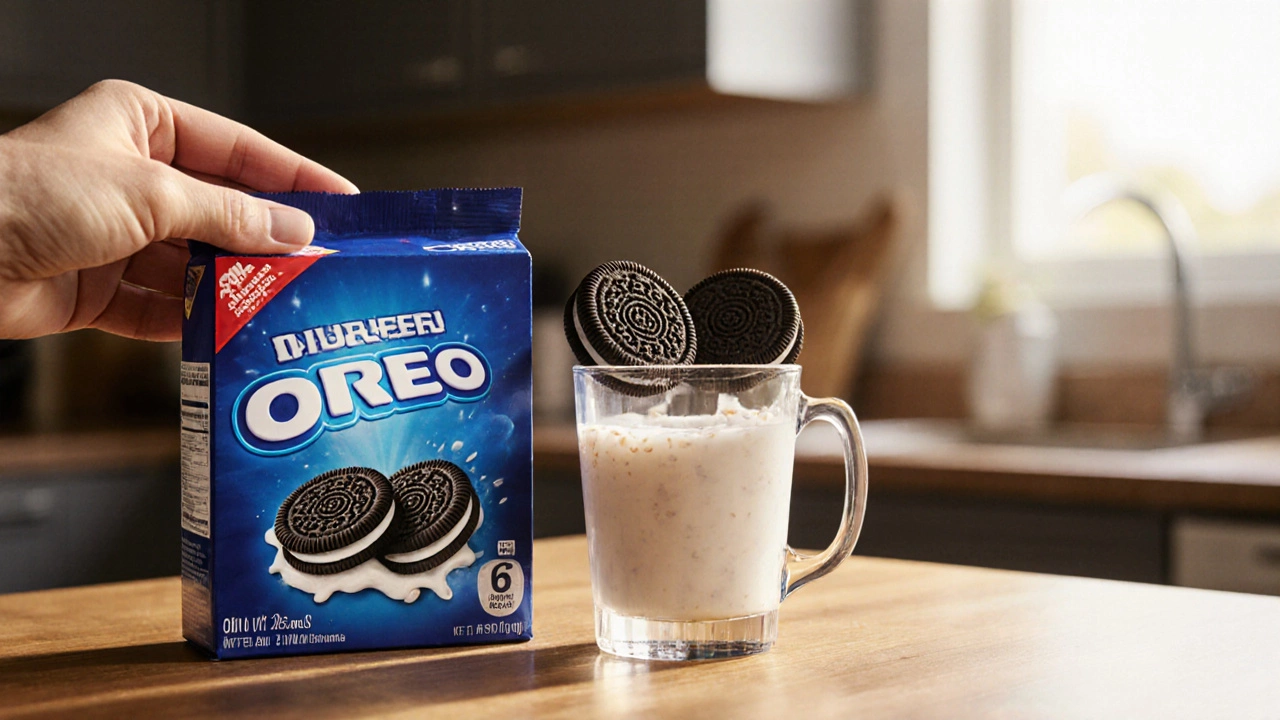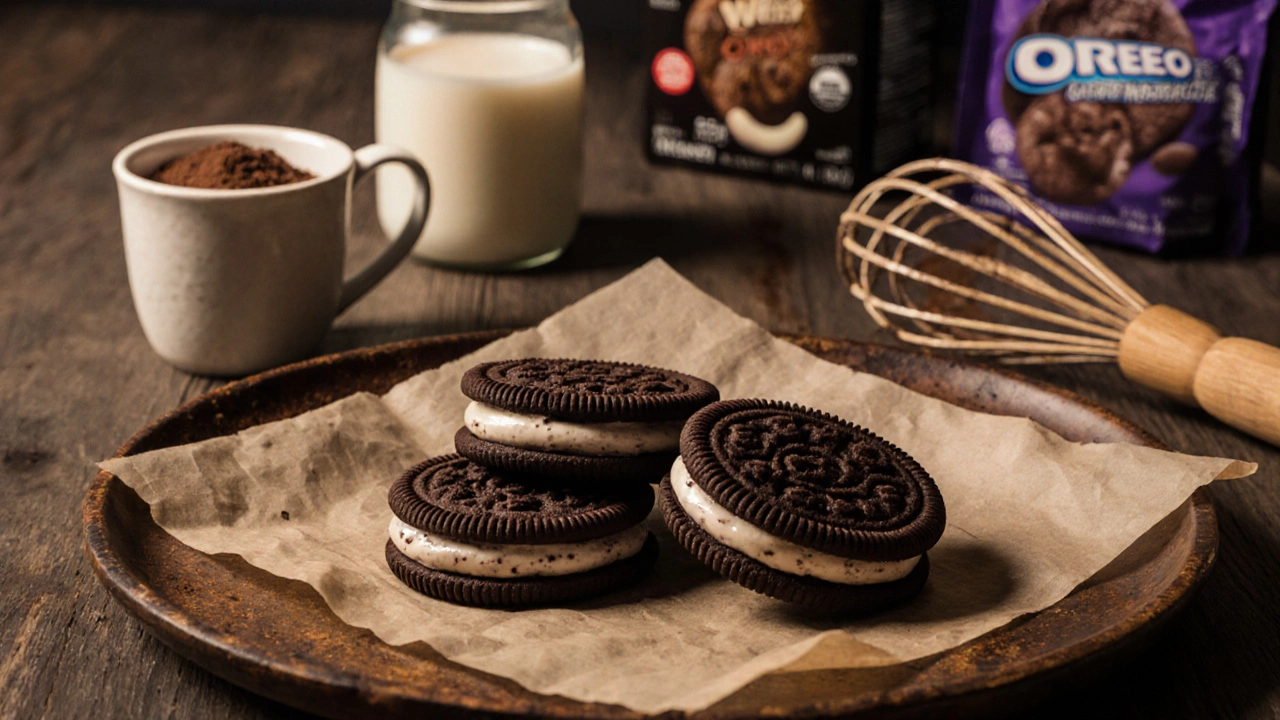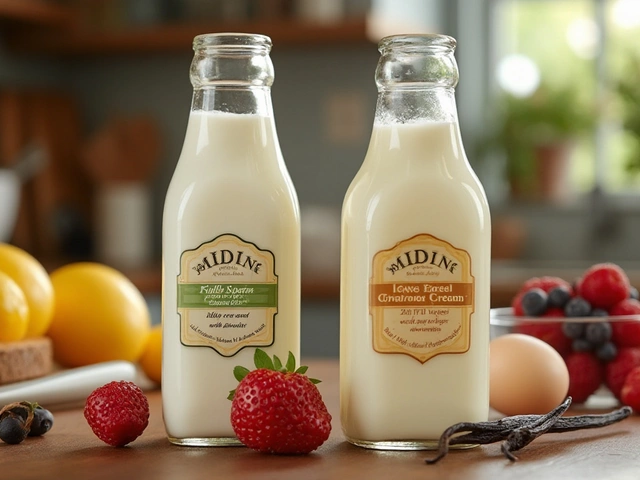
Vegan Oreo Checker
Check Your Oreo Variant
Red Flag Dairy ingredients like whey and milk powder
Caution Cross-contamination warnings
Green Light Certified Vegan labels
Always check ingredient lists and production details
Select an Oreo variant to check its vegan status
Ever stare at a pack of Oreos and wonder if you can dunk them in your oat milk without breaking your vegan vows? You’re not alone. The answer isn’t as clear‑cut as a simple “yes” or “no” because Oreo’s lineup spans several formulas, each with its own ingredient mix and production quirks. Below you’ll find a straight‑forward breakdown of what makes an Oreo vegan-or not-plus tips for spotting vegan‑friendly versions and simple swaps if you need a cruelty‑free cookie fix.
Key Takeaways
- Regular Oreo cookies contain whey and other dairy derivatives, so they are not vegan.
- Some specialty variants, like the Gluten‑Free Oreo and certain limited‑edition flavors, are dairy‑free but may still be processed on shared equipment.
- Look for “Vegan” or “Certified Vegan” logos, and double‑check the ingredient list for hidden animal‑derived components.
- Making your own vegan Oreo‑style cookies at home is quick, cheap, and guarantees a clean label.
- Cross‑contamination is a real concern; if strict avoidance is required, choose certified‑vegan brands or homemade versions.
What Does “Vegan” Really Mean?
In a vegan diet is a way of eating that excludes all animal‑derived ingredients, including meat, dairy, eggs, honey, and even certain additives like gelatin or whey. For processed foods, the rule of thumb is to scan the ingredient list for any animal‑based items. Some manufacturers also list “may contain” warnings, which signal possible cross‑contact.
Breaking Down the Classic Oreo Ingredient List
The standard Oreo sold in most grocery aisles lists the following components (US label, 2025 edition):
- Sugar
- Unbleached enriched flour (wheat flour, niacin, reduced iron, thiamine mononitrate, riboflavin, folic acid)
- Palm oil
- Cocoa (processed with alkali)
- Invert sugar
- Leavening (baking soda, sodium acid pyrophosphate)
- Soy lecithin is an emulsifier derived from soy beans
- Salt
- Chocolate
- Artificial flavor
- Whey protein, a dairy‑derived ingredient used in the creme filling
- Skim milk powder
Both whey and skim milk powder are unequivocal animal products, which makes the classic Oreo off‑limits for vegans.
Which Oreo Variants Might Be Vegan?
| Variant | Vegan? | Key Animal‑Derived Ingredients | Notes on Processing |
|---|---|---|---|
| Original Oreo | No | Whey, skim milk powder | Made on shared equipment with dairy |
| Oreo Thins (Chocolate) | No | Whey, skim milk powder | Same facility as classic |
| Double Stuf | No | Whey, skim milk powder | Higher filling, same ingredients |
| Gluten‑Free Oreo | Potentially* | Whey, skim milk powder | Manufactured in a dedicated line, but dairy still present |
| Birthday Cake Oreo | No | Whey, skim milk powder | Limited edition, dairy‑based |
| Vegan‑Labelled Oreo (Europe, 2024 batch) | Yes | None | Certified Vegan, produced on separate line |
*“Potentially” means the product is dairy‑free but may still be processed alongside dairy items unless a certification states otherwise.
Reading Labels: What to Look For
When you’re scanning a package, keep an eye out for these red flags:
- Terms like “whey,” “casein,” “milk powder,” “lactose,” or “cream” - all dairy.
- “May contain milk” or “processed on shared equipment” warns of cross‑contamination.
- Vegan certifications such as the “Vegan Society” logo, “Certified Vegan” seal, or the “Plant‑Based” badge.
Manufacturers sometimes hide dairy under names like “non‑fat dairy‑based ingredient” or “milk‑derived solids.” When in doubt, a quick search of the ingredient on a reputable vegan‑checking site (e.g.,Authorized Vegan) can confirm its status.
Processing Concerns: The Cross‑Contamination Issue
Even if a specific Oreo variety lists no animal ingredients, the fact that many cookies are baked in the same ovens or on the same lines as dairy‑containing treats raises a cross‑contact risk. For most vegans, a “may contain” disclaimer is enough to avoid the product, especially for those following a strict ethical stance that includes avoiding indirect animal exploitation.
Vegan‑Friendly Alternatives to Oreos
If you can’t find a certified‑vegan Oreo, there are plenty of store‑bought alternatives that mimic the classic chocolate‑and‑creme combo:
- Trader Joe’s Vegan Chocolate Sandwich Cookies - two cocoa wafers with a plant‑based vanilla filling.
- Ben &Jerry’s Non‑Dairy Cookie Sandwiches - dairy‑free and labeled “Vegan.”
- Back to the Roots Vegan Oreo‑Style Cookies - made with oat flour and a cashew‑based filling.
All of these options carry clear vegan labeling, minimizing guesswork.

DIY: How to Make Your Own Vegan Oreo‑Style Cookies
Creating a homemade version guarantees control over every ingredient. Below is a simple recipe that yields about 24 sandwich cookies.
- Preheat the oven to 350°F (180°C) and line a baking sheet with parchment.
- In a bowl, whisk together 1cup all‑purpose flour, ¼cup cocoa powder, ½tsp baking soda, and a pinch of salt.
- In another bowl, cream ¼cup coconut oil with ½cup brown sugar until fluffy.
- Add ¼cup plant‑based milk (almond or oat) and 1tsp vanilla extract to the wet mix.
- Combine wet and dry ingredients, forming a stiff dough. Chill for 15minutes.
- Roll the dough into 1‑inch balls, flatten gently, and bake 10‑12minutes.
- For the filling, blend ½cup soaked cashews, 2tbsp maple syrup, 1tbsp coconut oil, and a pinch of salt until smooth.
- Once cookies cool, spread a dollop of the cashew filling on the flat side of one cookie and sandwich with another.
- Refrigerate 30minutes to set the filling before serving.
These cookies have the same crunch‑creamy contrast as a store‑bought Oreo but are 100% vegan and gluten‑optional if you swap the flour for a gluten‑free blend.
Common Misconceptions
• “All Oreo‑brand cookies are the same.” - Not true. Different markets (EU vs. US) sometimes sell dairy‑free formulas.
• “If the ingredient list has no meat, it’s automatically vegan.” - Dairy, honey, and certain additives are animal‑derived even though they’re not meat.
• “Vegan labels are just marketing tricks.” - Reputable certifications undergo third‑party audits; they’re reliable for most consumers.
Bottom Line
The short answer: the classic Oreo you find on most shelves is not vegan because of whey and skim milk powder. However, limited‑edition vegan‑labeled batches, some international versions, and a handful of specialty flavors are dairy‑free. Always read the label, watch for cross‑contamination warnings, and consider homemade or certified‑vegan alternatives for a worry‑free snack.
Frequently Asked Questions
Are regular Oreos vegan?
No. Traditional Oreos contain whey protein and skim milk powder, both derived from dairy.
Which Oreo flavor is certified vegan?
In 2024 Nabisco released a limited‑edition Oreo in Europe with a “Certified Vegan” seal. Availability varies by region.
Can I trust the “may contain milk” warning?
Yes. A “may contain” label indicates that the product was processed on equipment that also handles dairy, which many strict vegans avoid.
How do I make a vegan Oreo at home?
Follow the simple recipe above: chocolate wafer base, cashew‑based creme filling, and bake for 10‑12 minutes. It’s quick and fully plant‑based.
Is soy lecithin vegan?
Yes. Soy lecithin is derived from soy beans, a plant source, and is widely used as a vegan‑friendly emulsifier.





